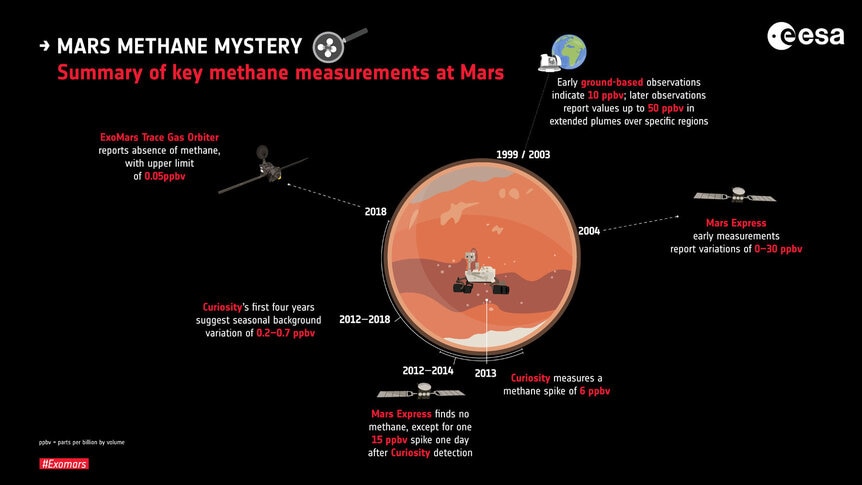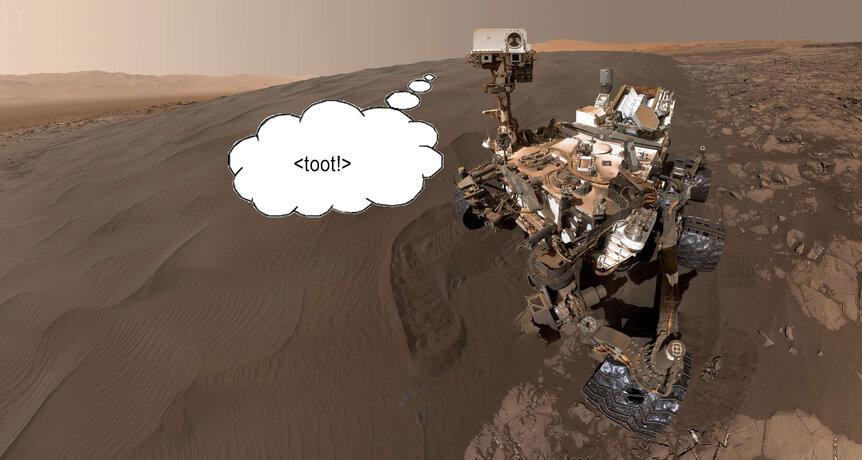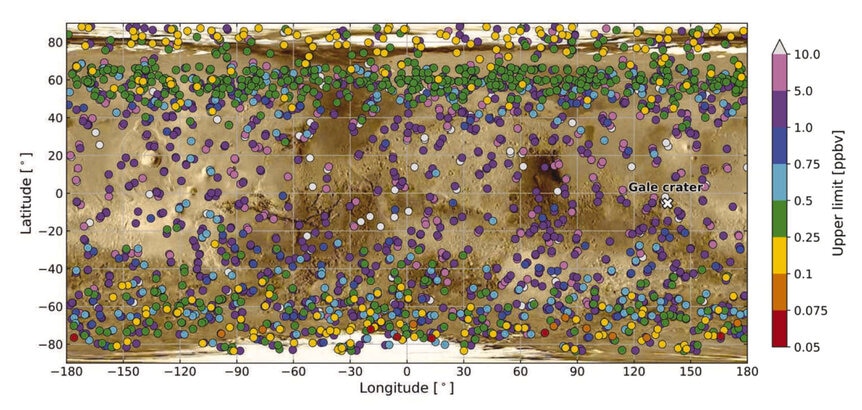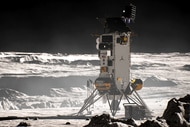Mars methane mysteriously missing
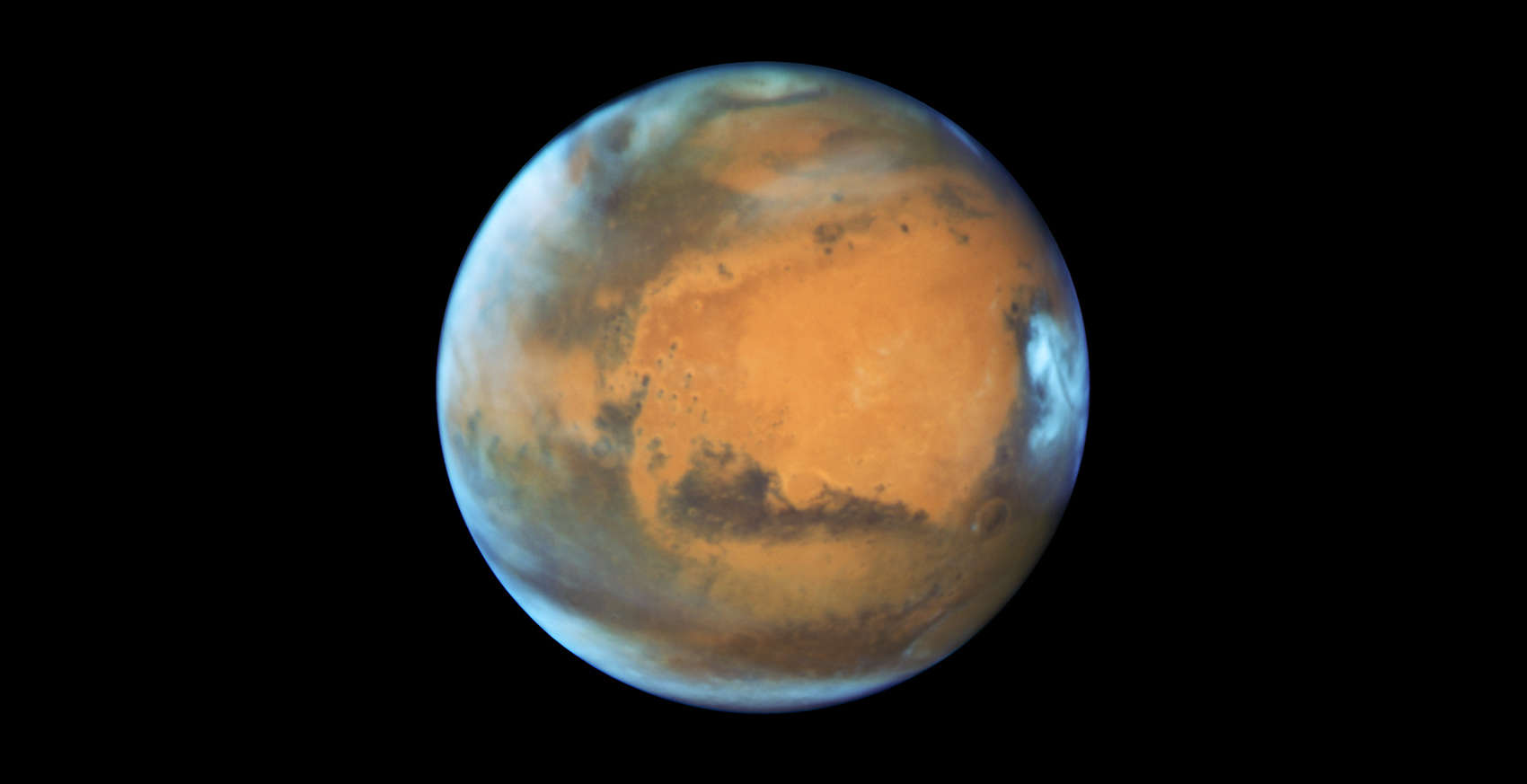
For many years, planetary scientists have been tracking a Martian ghost: methane gas.
It was first seen by ground-based observations of Mars back in the 2000s, then subsequently by spacecraft orbiting the Red Planet. But these observations barely detected it, and have been called into question time and again. There's been much debate, and some of the claims have been contradictory. No truly convincing observation of it has been made.
So the European Space Agency sent a probe to Mars called the ExoMars Trace Gas Orbiter, equipped with a device on it called the Nadir and Occultation for MArs Discovery, or NOMAD*. It can look for many different gases, including methane, in the Martian atmosphere in a variety of ways.
The initial results from the probe showed no methane found, but a more in-depth, long-term analysis of data was needed.
… and that analysis has just been done. In a paper that has just come out, a team of planetary scientists announced its result: Nope.
Despite looking very hard for Martian methane over a long period of time, none was found. They also looked for ethane and ethylene, slightly more complex molecules similar to methane, and found none. The best they do was report upper limits (meaning, their observations would've seen these molecules had they been more abundant than the numbers reported). These limits are low: For methane, there was no more than 0.06 parts per billion when measured by volume (like having 60 liters of methane in a cube a kilometer on a side). Ethane and ethylene couldn't have been more abundant than 0.1 and 0.7 parts per billion, either.
Yikes. That's low, and seems to preclude the previous measurements, which went as high as 60 ppb. If the amounts thought to be seen earlier were in the atmosphere, NOMAD would've seen it.
[UPDATE (Dec. 29, 2020): To be clear, NOMAD was able to make measurements down to about 6 km above the Martian surface. The Curiosity rover is on the surface, and found methane at decent levels at one point, which was confirmed by another orbiter. As I note below something like that may be rare, or for some reason doesn't get to the height necessary for NOMAD to see it. But that would then add another layer of mystery to all this. That doesn't mean the observation isn't real; just that this is pretty complicated.]
Why is this important? Because on Earth, the majority of methane in the air comes from life. Bacteria that feast on dead plants and animals emit it, and some more complex life forms tend to um, excrete it as well.
It can be created by geologic processes, too. Lightning can make it, or when hydrogen released by chemical processes (like some minerals dissolving in water) reacts with carbon dioxide. These are less of a source here than biology, though.
So if methane is seen on Mars, it's either very interesting because it means there are ongoing geologic processes that can produce it, or it's VERY interesting because it means wee Martian beasties are farting it out.
As you can imagine, scientists are quite intent on seeing whether Mars has methane or not.
NOMAD is cool. It uses the Sun as a source of light. When sunlight passes through the Martian atmosphere, very specific wavelengths (colors) are absorbed by different molecules. By identifying those wavelengths you can see what's in the air there, and by looking at how much is absorbed you can figure out how much of that molecule is there, too.
Among other methods, it uses what's called solar occultations to measure these gases. As the spacecraft orbits Mars it sees the Sun pass behind Mars, then a little while later sees it re-emerge from behind the planet's disk— essentially, sunset and sunrise. When one astronomical object blocks another we call that an occultation.
As the Sun just starts to set behind Mars, its light goes through the upper atmosphere, and as it gets closer to the edge of the planet's disk NOMAD sees that light going through lower and lower parts of the atmosphere (and the reverse when the Sun comes back out). By doing this over the course of an entire Earth year (April 2018 to April 2019) it was able to sample the Martian atmosphere from 6 km above the surface up to 100 km, from 85° north to 85° south over every longitude — in other words, essentially over the whole planet.
The scientists looked at 240,000 separate global measurements, as well as 2,000 that looked at specific sites on the planet for plumes of methane. They also looked for ethane and ethylene because those can be used to determine the source of the methane; biology on Earth makes predominantly methane but geologic process make all three. Had they found methane but no ethane or ethylene that would've been very exciting.
But they didn't find anything.
So does this rule out methane on Mars? Well, yes and no. This is certainly a very strong constraint on it. Any methane produced by, say, an underground pocket getting popped open would show a strong local signal for a month or so, but then would get mixed around the atmosphere. Since they didn't see any, that means any source like this would have to be pretty sporadic.
I'll note that the year of NOMAD observations covered the northern hemisphere late summer to early spring (a Martian year is two Earth years), and the southern hemisphere's late winter to early fall. So if methane production is seasonal, NOMAD should've seen it in one hemisphere or another.
This finding is scientifically interesting, since it does seem to close the debate on the earlier observations, even if it's kind of a bummer otherwise. It does seem to make the possibility of life on or under the Martian surface that much less likely.
It doesn't preclude life having existed there billions of years ago, though, and would still be incredibly exciting to discover evidence for. Perseverance lands on Mars on February 18, 2021, and is designed in part to look for that evidence.
Patience. We may have some answers one way or another soon enough.
*Not to be confused with Tan Ru.
